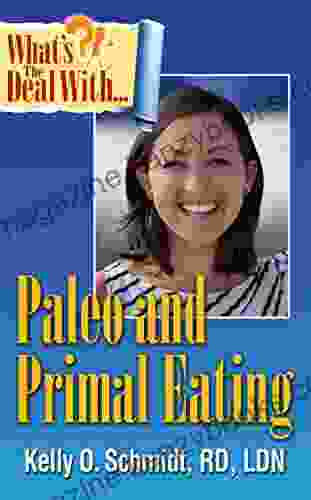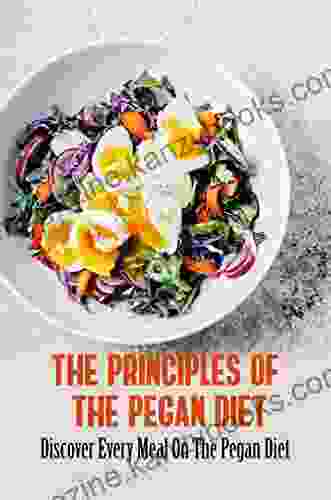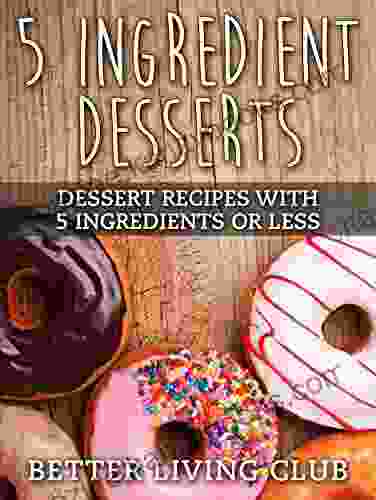What's the Deal With Paleo and Primal Eating? Unlocking the Secrets of Ancestral Nutrition

In the realm of nutrition, the Paleo and Primal diets have emerged as popular approaches that advocate for a return to our ancestral roots. Inspired by the diets of our prehistoric hunter-gatherer ancestors, these diets propose that modern-day health ailments may stem from a mismatch between our current diets and the evolutionary adaptations of our bodies.
4.2 out of 5
| Language | : | English |
| File size | : | 2369 KB |
| Text-to-Speech | : | Enabled |
| Screen Reader | : | Supported |
| Enhanced typesetting | : | Enabled |
| Word Wise | : | Enabled |
| Print length | : | 140 pages |
| Lending | : | Enabled |
This comprehensive article delves into the fascinating world of Paleo and Primal eating, exploring their origins, principles, benefits, and controversies. By shedding light on the complexities of ancestral nutrition, you'll be better equipped to make informed choices about your health and well-being.
Origins of Paleo and Primal Diets
The Paleo diet, also known as the Stone Age diet, is based on the premise that humans evolved to thrive on the foods that were available during the Paleolithic era, roughly spanning from 2.6 million to 10,000 years ago. Proponents of the Paleo diet argue that our bodies are genetically adapted to a diet rich in lean meats, fish, fruits, vegetables, nuts, and seeds, and that the of modern foods, such as grains, dairy products, and processed foods, is the root of many chronic diseases prevalent today.
The Primal diet shares many similarities with the Paleo diet, but it places a greater emphasis on animal-based foods. It's based on the belief that our ancestors were primarily meat-eaters, and that a diet high in animal fats and proteins is optimal for human health. The Primal diet often includes organ meats, bone broth, and fermented foods.
Principles of Paleo and Primal Diets
At their core, Paleo and Primal diets emphasize the following principles:
- Exclusion of grains: Grains, including wheat, rice, corn, and barley, are considered non-native to the human diet and may contribute to inflammation and digestive issues.
- Limited dairy consumption: Dairy products, particularly those from cows, are another relatively recent addition to the human diet and may not be well-tolerated by many individuals.
- Focus on whole, unprocessed foods: Fresh fruits, vegetables, lean meats, fish, nuts, and seeds form the foundation of Paleo and Primal diets.
- Minimized sugar intake: Added sugars, both natural and artificial, are viewed as detrimental to health and are discouraged.
- Emphasis on nutrient-dense foods: Foods rich in vitamins, minerals, and antioxidants are prioritized over nutrient-poor, processed foods.
Benefits of Paleo and Primal Diets
Proponents of Paleo and Primal diets often report a wide range of health benefits, including:
- Weight loss: By eliminating calorie-dense processed foods, grains, and sugary drinks, Paleo and Primal diets may promote weight loss and improved body composition.
- Improved blood sugar control: The exclusion of grains and refined carbohydrates can help stabilize blood sugar levels, reducing the risk of insulin resistance and type 2 diabetes.
- Reduced inflammation: By eliminating inflammatory foods like grains, dairy, and processed oils, Paleo and Primal diets may help alleviate chronic inflammation.
- Enhanced cognitive function: Some studies suggest that the high-fat, low-carb nature of Paleo and Primal diets may improve cognitive function and reduce the risk of neurodegenerative diseases.
- Improved digestive health: By avoiding foods that are difficult to digest, such as grains and dairy, Paleo and Primal diets may promote better digestive function.
Controversies Surrounding Paleo and Primal Diets
While Paleo and Primal diets have gained popularity, they are not without their share of controversies:
- Limited nutrient intake: Critics argue that by excluding entire food groups, such as grains and legumes, Paleo and Primal diets may not provide a balanced intake of all essential nutrients.
- Sustainability: A meat-heavy diet can be resource-intensive and may not be sustainable in the long run.
- Lack of scientific evidence: While some studies have shown benefits from Paleo and Primal diets, more long-term, well-designed research is needed to support their long-term health effects.
- Potential for nutrient deficiencies: Restricting food groups can increase the risk of certain nutrient deficiencies, especially if not properly planned.
- Social and cultural limitations: The exclusion of grains and dairy products can make it challenging to participate in social gatherings and enjoy traditional cultural foods.
Making an Informed Decision
Whether or not to adopt a Paleo or Primal diet is a personal choice. Before making any drastic changes to your diet, it's crucial to consult with a healthcare professional or registered dietitian. They can assess your individual needs and help you determine if an ancestral-style diet is right for you.
If you decide to explore Paleo or Primal eating, it's essential to do so in a balanced and informed manner. Focus on consuming whole, unprocessed foods and ensuring you're meeting your nutrient needs. Listen to your body and make adjustments as necessary.
Paleo and Primal diets offer a unique perspective on nutrition, emphasizing a return to our ancestral roots. While they may provide certain health benefits, it's important to approach them with caution and be aware of their potential limitations. By understanding the principles and controversies surrounding these diets, you can make an informed decision about whether they align with your health goals and lifestyle.
Remember, there is no one-size-fits-all solution when it comes to nutrition. The best approach is to find a balanced, sustainable diet that meets your individual needs and preferences while supporting your overall health and well-being.
4.2 out of 5
| Language | : | English |
| File size | : | 2369 KB |
| Text-to-Speech | : | Enabled |
| Screen Reader | : | Supported |
| Enhanced typesetting | : | Enabled |
| Word Wise | : | Enabled |
| Print length | : | 140 pages |
| Lending | : | Enabled |
Do you want to contribute by writing guest posts on this blog?
Please contact us and send us a resume of previous articles that you have written.
 Book
Book Novel
Novel Page
Page Chapter
Chapter Text
Text Story
Story Genre
Genre Reader
Reader Library
Library Paperback
Paperback E-book
E-book Magazine
Magazine Newspaper
Newspaper Paragraph
Paragraph Sentence
Sentence Bookmark
Bookmark Shelf
Shelf Glossary
Glossary Bibliography
Bibliography Foreword
Foreword Preface
Preface Synopsis
Synopsis Annotation
Annotation Footnote
Footnote Manuscript
Manuscript Scroll
Scroll Codex
Codex Tome
Tome Bestseller
Bestseller Classics
Classics Library card
Library card Narrative
Narrative Biography
Biography Autobiography
Autobiography Memoir
Memoir Reference
Reference Encyclopedia
Encyclopedia Sandy Quinn
Sandy Quinn Linda Byler
Linda Byler Mark B Gilgam
Mark B Gilgam Matthias Nagelschmidt
Matthias Nagelschmidt Kimberly Ann Kiedrowski
Kimberly Ann Kiedrowski Kenneth J Howell
Kenneth J Howell Maria Ross
Maria Ross Nicole Burch
Nicole Burch Kimberlie Hamilton
Kimberlie Hamilton Khoa Nam Tran
Khoa Nam Tran L B Lukas
L B Lukas Kenan Trebincevic
Kenan Trebincevic Kim Haasarud
Kim Haasarud Paul Higgins
Paul Higgins M Q Kajack
M Q Kajack Ken Klein
Ken Klein Ken Johnson
Ken Johnson Nauman Rasool
Nauman Rasool Kelsey J Patel
Kelsey J Patel Robin Roodenburg
Robin Roodenburg
Light bulbAdvertise smarter! Our strategic ad space ensures maximum exposure. Reserve your spot today!
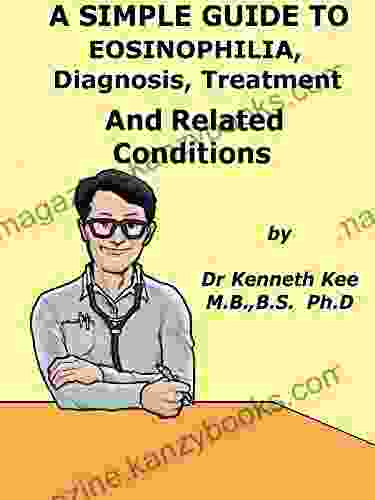
 Eugene PowellSimple Guide to Eosinophilia: Diagnosis, Treatment, and Related Conditions...
Eugene PowellSimple Guide to Eosinophilia: Diagnosis, Treatment, and Related Conditions... Allen ParkerFollow ·14k
Allen ParkerFollow ·14k Stanley BellFollow ·4.4k
Stanley BellFollow ·4.4k Fredrick CoxFollow ·4.4k
Fredrick CoxFollow ·4.4k Hayden MitchellFollow ·7.7k
Hayden MitchellFollow ·7.7k Ross NelsonFollow ·6k
Ross NelsonFollow ·6k Ernest J. GainesFollow ·12.7k
Ernest J. GainesFollow ·12.7k Rudyard KiplingFollow ·12.5k
Rudyard KiplingFollow ·12.5k Thomas MannFollow ·19.9k
Thomas MannFollow ·19.9k

 Ernesto Sabato
Ernesto SabatoLoving Table: Creating Memorable Gatherings
Gatherings...
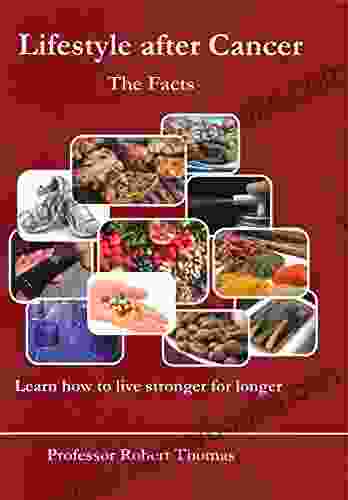
 Mark Twain
Mark TwainLifestyle After Cancer: The Facts
Cancer is a life-changing...

 Keith Cox
Keith CoxUnlocking the Nutritional Needs of Individuals with...
Individuals with physical disabilities...

 Rubén Darío
Rubén DaríoHandbook And Guide To Evaluation And Treatment
Empowering Healthcare...
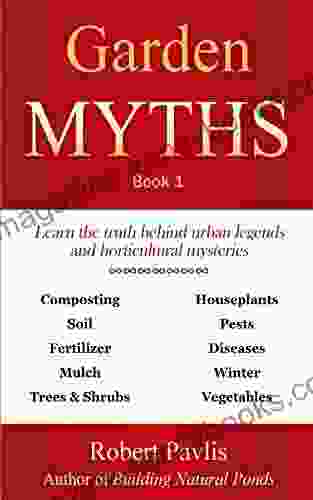
 Andy Hayes
Andy HayesUnveiling the Truth: "Garden Myths" by Robert Pavlis...
The world of gardening is often filled with a...
4.2 out of 5
| Language | : | English |
| File size | : | 2369 KB |
| Text-to-Speech | : | Enabled |
| Screen Reader | : | Supported |
| Enhanced typesetting | : | Enabled |
| Word Wise | : | Enabled |
| Print length | : | 140 pages |
| Lending | : | Enabled |


